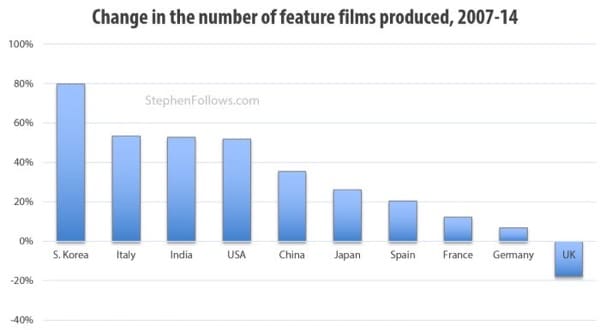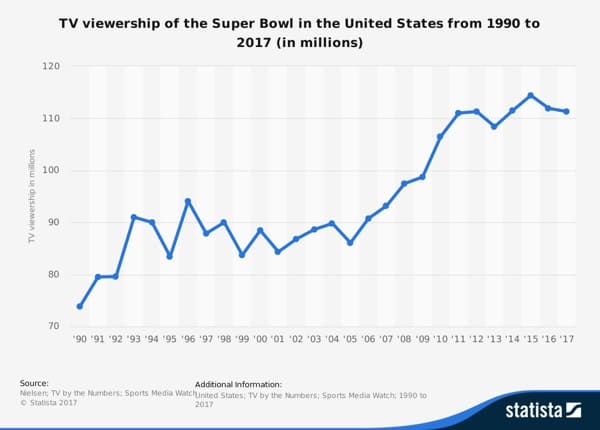Over the last six years, content’s relationship with the marketing world has been a wild ride.
Content was all the rage during the honeymoon stage. There were late nights, long conversations and no matter what, everything turned out rosy. The content itself didn’t matter – as long as you had more of it than your competitors, you were winning the content marketing battle.
As content became mainstream and more companies joined the scramble to publish as often as they could, distribution – and even more frequent content – were the next big tenets of content marketing. But hey, things were still fun so why not enjoy it?
A few years into the relationship, things got stale and there was trouble in paradise. Mark Schaefer published an article about something he called “content shock” – the existence of more content than a target audience could consume – and people started to panic. Was this the end? After all these years, was the relationship over?
No, not by a long shot. As any good marketer knows content is (and always was) an important part of a great digital strategy. Yet, as a result of jumping into the relationship too quickly and perhaps not remaining grounded in reality, content’s bond with the marketing world has devolved into a frayed thread that businesses are hesitant to pull at.

Believe it or not, some businesses – and maybe even marketers – are confused about content marketing and how to leverage it in their strategies. With that in mind, I’m going to take a closer look at content maketing then and now by examining its current state and suggesting how we can all move forward by learning from past mistakes or misconceptions.
The Wrong Lane for Content Marketing
Excess and speed are two words that don’t mix with content marketing. But unfortunately, a year or two into the content boom, many businesses were taking content marketing on a joyride in the fast lane.
It was a classic case of too much, too fast, and this is where things started to go wrong.
Somewhere around 2012, the content marketing buzz became so deafening it’s all businesses could think about. Even the businesses and marketers who had solid content strategies got consumed by producing more content as fast as possible. With the emergence of platforms like Elance and oDesk (now Upwork) and fiverr, the mad dash for content had the marketing world hypnotized.
One of the main interpretations of Schaefer’s content shock article was that because there is too much content for our audiences to consume, only the most expensive content – or the stuff with the biggest promotional budget – can rise to the top.
This is a misrepresentation because the problem isn’t that good content can’t find an audience, but rather low-quality content has no chance of accomplishing content marketing goals.
Here’s the thing: you get what you pay for. If you buy a cheap TV, you can’t be upset when it doesn’t work after three years. If you skimp on low quality furniture, there’s no room to cry foul when it wears out too quickly.
So why is everybody surprised that publishing $5 blog posts four times a week doesn’t work?
Not only does it not work now, it never worked. Nobody wanted to read a $5 blog post in 2012 and nobody wants to read one now, because they’re poorly written and offer no value.
Content marketing seeks to engage and capture a reader's attention while offering them value in the form of an answer to their question, or solution to their problem. Content like that needs time and energy behind it, not $5 and a one sentence brief.
There Will Never Be Enough Exceptional Content
“Content” is not just a reference to business blog posts or other marketing materials. Books, movies, plays, sporting events, video games, TV shows, and magazines are other forms of content our society consumes in massive amounts.
Guess what? Most content types are seeing an increase in production, not a decrease.
Here’s a chart depicting the increase in the number of films made (by country) in recent years:

Additionally, here’s a look at Super Bowl viewership in the United States, also by year:

As a society, we love to consume content. Whether it’s to get away from our everyday lives (movies, sporting events) or part of them (news articles, weather forecasts), we are often either looking for information or wanting to be entertained.
Sure, you could say that just because consumption of the Super Bowl and production of movies has increased, it doesn’t mean some content isn't getting ignored. I won’t argue.
In the same way there are too many low-quality blog posts being published, there are likely too many crappy movies and bad books being published. It’s the nature of content; some good, some bad and a sliver of exceptional.
The key is to be exceptional. If you’re making a movie, shoot for an Oscar; if you’re writing a book, aim for a Pulitzer; and if you’re crafting marketing content, win over your audience with content so exceptional there’s no chance it ends up anywhere other than the top of the heap.
Content Marketing in 2017 and Beyond
Don’t let content shock or any other scary term deter you from putting your thoughts, words and ideas out there. If it’s done well – with heart, energy and value – good content can and will soar above the cheap write-by-numbers fluff.
Technology and the increased flow of information has clearly made customers smarter, and thus a more formidable marketing challenge. But when it comes to content, people have always had the ability to sort through the filler; whether it’s books, movies, magazines or blogs, if your content is truly worth reading and valuable, there will be potential customers willing to do the necessary digging to find the answers they’re looking for.







